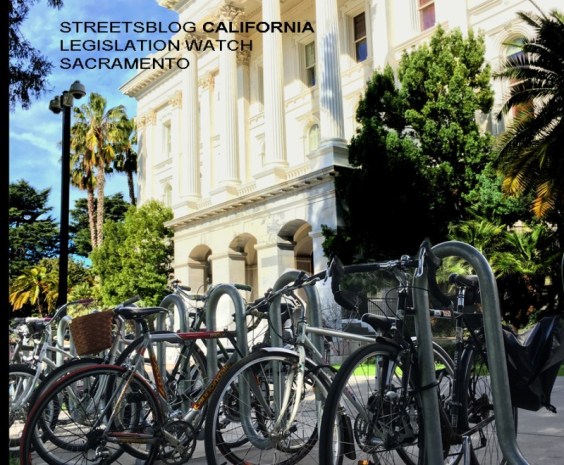Cross-posted from the Frontier Group.
As the parents of two teenage boys, my wife and I are required to bore them periodically with stories of how things were When We Were Your Age.
One of those stories relates to food. My wife has often told the kids that she did not know what a whole bulb of garlic looked like until she was in college. In our house, where we use a lot of garlic, that’s almost as unthinkable as growing up without the Internet.
But I can certainly relate. As a child of the ‘70s and ‘80s, “garlic” was a powder that came in a jar, beer was yellow, apples were Delicious, and an heirloom vegetable was a can of peas that had been sitting in the back of the pantry for too long.
Today, of course, the typical supermarket contains a wide array of foods that the average 1970s American did not even know existed. But can a person who grew up learning how to cook from, say, the 1965 edition of the Better Homes and Gardens cookbook be expected to make the most of all that bounty?
A similar question can be asked in transportation. In our upcoming report, A New Way Forward, we review the explosion of new tools and strategies – many of them emerging in just the last decade – that are creating new opportunities to eliminate greenhouse gas emissions from our transportation system.
Electric vehicles, multiple flavors of “shared mobility” services, information technology apps and tools, new concepts for building “complete streets,” and other advances give policy-makers an ever-expanding array of ingredients that can be combined in new and exciting ways to create cleaner, greener and more efficient systems for moving people and goods around our communities.
But are our current institutions – our federal and state transportation departments, our metropolitan planning organizations, our transit agencies and local public works departments – equipped to make the most of those opportunities?
The “cookbooks” – the statutes, regulations and habits of thought – that guide American transportation policy were largely developed generations ago at a time when tastes were different and the number of available ingredients fewer. Back then, the main challenge was to bring good roads to a country that had too few of them. And so, our transportation policies were oriented toward building things – an orientation that continues to dominate how we think of transportation policy today.
Roads congested? Build more. Don’t like roads? Build transit instead.
There remain times and places where infrastructure investment is important – a half-century of underinvestment in transit and rail systems, for example, won’t fix itself. But today, our transportation debates continue to be dominated by the question of how we will raise the money to build the infrastructure our old models tell us that we “need.”
The emerging transportation strategies, technologies and tools of the 21st century present us with a different set of opportunities. Shared mobility, information technology and new vehicle power trains give us the opportunity to make better use of our existing resources – the empty seats in our cars, the idle cars in our driveways, the empty parking spaces in our cities and towns, the wasted energy from internal combustion engines – all of which are profoundly wasteful of personal wealth, public funds, natural resources and precious urban space. Automated and connected vehicles, meanwhile, provide us with the opportunity to manage our transportation system for greater energy efficiency and environmental performance.
Those opportunities will, I fear, go largely unrealized until we rewire our transportation agencies to prioritize maximizing the efficient use of our current system over laying more asphalt – and empower appropriate public agencies with the tools to take full advantage of the opportunities today's new technologies present.
There are signs of progress. Organizations such as Transportation for America have argued with some success for what should be a common-sense notion: that we set goals for how we want transportation to benefit society, measure our progress toward those goals, and invest public funds accordingly. Among those goals must be reducing greenhouse gas emissions.
Organizations like the National Association of City Transportation Officials are writing new cookbooks to help cities rethink the allocation of precious urban space among all the people who wish to use it. Programs like the U.S. DOT’s Smart City Challenge act as a kind of “Top Chef” competition for cities to pioneer new recipes for using technology to revolutionize transportation in our cities.
But we continue to live in a nation where the expenditure of tens of billions of dollars each year is guided by politically driven formulas (such as the 80/20 federal highway/transit funding split) with little to no connection to actual needs, and where spending on infrastructure continues to trump investments in improving transportation service. It is no wonder that, with transportation agencies continuing to serve up the equivalent of tuna and jello pie year after year, some (such as the good folks at Strong Towns) have argued that the first step is to sneak that old Betty Crocker cookbook to the curb on trash day – to fund no new roads until we undertake a thorough systemic rethink of transportation.
Ultimately, the institutions we currently have may simply prove to be inadequate to the task. Ask yourself: who in your region would either have the power or believe it was within their realm of responsibility to bring together transit and shared mobility operators to create an integrated “mobility as a service” product, as is beginning to occur in cities around the world? Who would be able to develop and implement a pricing system for highways, or rules for prioritizing access to the roads, that would steer the impending driverless car revolution in ways that encourage sharing of vehicles and rides? If you have a hard time answering, chances are that your region will have a hard time getting the most out of the exciting and innovative advances in transportation that are coming down the pike – unless and until you undertake major institutional reform.
If, by 2020, we continue to pass federal transportation spending bills that reinforce the status quo, as Congress did last December, and continue to make transportation policy at the state and local levels in the ways we always have, the nation will miss a tremendous opportunity for beneficial change – and perhaps our only chance to forestall the worst impacts of global warming. Implementing institutional change – like adopting a new style of cooking – can be hard to contemplate and even harder to do. But if we are smart, creative and focused on results, the end result can be delicious.
Previous posts in this series:
1. We Can Do It: A Zero-Carbon Transportation System Is Possible
2. Achieving the Impossible: Unlocking the Power of Transformation




